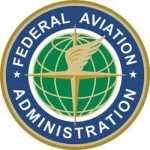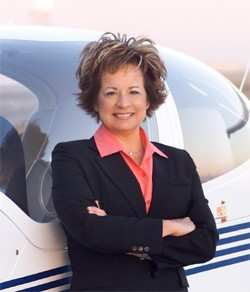AEA Members Say They Are "Looking Forward" To Receiving
Installation Criteria
 In response to the FAA’s release of its final rule,
“Automatic Dependent Surveillance–Broadcast (ADS-B) Out
Performance Requirements to Support Air Traffic Control (ATC)
Service,” both the Aircraft Electronics Association (AEA) and
the General Aviation Manufacturers Association (GAMA) said Thursday
they welcomed its arrival.
In response to the FAA’s release of its final rule,
“Automatic Dependent Surveillance–Broadcast (ADS-B) Out
Performance Requirements to Support Air Traffic Control (ATC)
Service,” both the Aircraft Electronics Association (AEA) and
the General Aviation Manufacturers Association (GAMA) said Thursday
they welcomed its arrival.
“At first glance of the 149-page final rule, we are
cautiously optimistic that the FAA listened to the majority of
comments raised by industry in the NPRM, and promulgated a rule
that will positively transform the future of our nation’s
airspace system,” said Paula Derks, president of the AEA.
The final rule focuses solely on ADS-B Out and does not provide
requirements for ADS-B In, stating that requirements are not
sufficiently defined to implement ADS-B In at this time. The FAA
also has determined in the final rule, as opposed to the NPRM, that
a single bottom-mounted antenna is the minimum requirement for ATC
surveillance. However, operators must note this rule does not
remove or modify any existing antenna diversity requirements for
transponders or TCAS/ACAS.
The FAA remains steadfast with a 2020 compliance date with
NAS-wide ground infrastructure implementation scheduled to be
complete in 2013. According to the agency, these dates would
provide operators with at least seven years of operational
experience with these services before the ADS-B compliance date of
2020.

AEA's Paula Derks
According to the contents of the rule, the FAA estimates the
total cost to equip general aviation aircraft from 2012 through
2035 would range from $1.2 billion to $4.5 billion with a mid-point
average of nearly $2.9 billion. The agency estimates general
aviation could receive up to $200 million in ADS-B Out
benefits.
“We look forward to reviewing the installation criteria,
which will be contained in advisory materials to be published
later,” Derks said.
“Our members are engineering and producing the
state-of-the-art equipment necessary to equip the general aviation
fleet over the next several years, and installation criteria will
be critical in determining the amount of time and investment repair
station personnel will incur with equipping thousands of GA
airplanes,” she said.
On the manufacturing side, GAMA CEO Pete Bunce said "We commend
Secretary LaHood and Administrator Babbitt for taking on
modernization with such energy and focus. The ADS-B program
demonstrates successful collaboration between the FAA and industry.
This cooperation is essential as we look to deploy other components
of the NextGen program."

GAMA's Pete Bunce
In order to start accruing the benefits of NextGen, the aircraft
fleet must be equipped with ADS-B Out compliant avionics that meets
specified performance requirements as defined by the FAA.
"With this rule, we have the standards in place that will allow for
further acceleration of air traffic modernization particularly if
we can incentivize operators to expedite the equipage of their
aircraft," said Bunce.
 ANN's Daily Aero-Linx (05.02.24)
ANN's Daily Aero-Linx (05.02.24) ANN's Daily Aero-Term (05.02.24): Touchdown Zone Lighting
ANN's Daily Aero-Term (05.02.24): Touchdown Zone Lighting Aero-News: Quote of the Day (05.02.24)
Aero-News: Quote of the Day (05.02.24) ANN FAQ: Contributing To Aero-TV
ANN FAQ: Contributing To Aero-TV NTSB Final Report: Cirrus Design Corp SR20
NTSB Final Report: Cirrus Design Corp SR20





